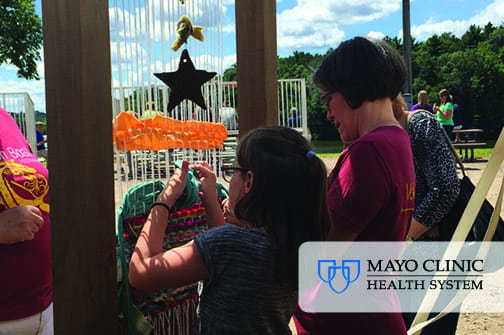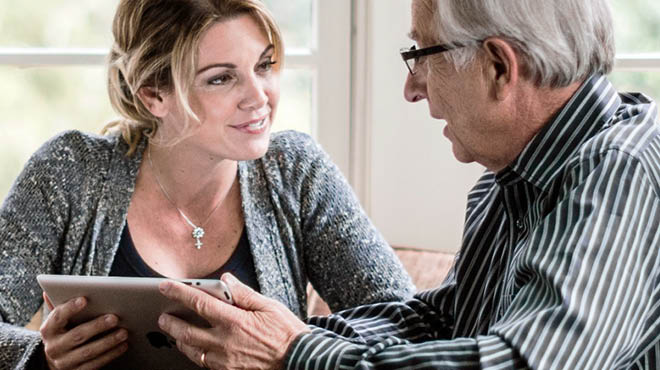Recent Posts
-

-
 Patient StoriesA lifesaver saved: An EMS veteran’s journey from rescue to recoveryNovember 14, 2025
Patient StoriesA lifesaver saved: An EMS veteran’s journey from rescue to recoveryNovember 14, 2025 -

Palliative, hospice care ease transition for terminally ill man

Nancy Moessner smiles affectionately when reflecting on the happy memories she and her husband, Jim, have shared through the years: the two sons they raised together, the weekend excursions they took, the train trips they enjoyed as a family.
Jim, an Eau Claire resident who is a former real estate appraiser, was diagnosed with multiple sclerosis — a disease of the brain and spinal cord — in 1980. The condition was mild in the beginning, and Jim managed it and lived a normal life for decades. But everything changed in fall 2006.
A RAPID CHANGE
“Lesions all over his brain, right-side weakness — it just exploded and never relented,” recalls Nancy, 67, Jim’s primary caretaker. His multiple sclerosis created so much cognitive impairment that he had to stop working in December 2006.
Today, Jim is unable to walk or speak, and requires complete care by family and the hospice team from Mayo Clinic Health System in Eau Claire. Family time together is limited. As hard as that realization is, first having access to palliative care and now hospice services has helped lighten the load.
LIGHTENING THE LOAD
“Hospice has provided an amazing amount of support,” Nancy says. “All of the staff at Mayo Clinic Health System — not just in the hospice program but even prior to hospice — have been so good with Jim and so knowledgeable about what services are available for treating and helping him. It just has made this whole transition easier.”
Janna Baker, a nurse practitioner in Palliative Care, worked with the Moessners frequently over the course of a year before Jim transitioned to another nurse practitioner and then, ultimately, to hospice. Janna remembers the couple fondly and recalls having several care goals conversations with them about tests and treatments.
“Nancy is doting and so attentive to Jim,” Janna says. “She has given him such good care and was open to our discussions about goals of care and end-of-life because they hadn’t really talked about those topics prior to going on Palliative Care. I feel like it was really helpful to her.”
Janna outlined the differences between palliative care and hospice, and explained that palliative care is intended for anyone with a serious illness. It comes before hospice care, and its focus is on symptom management rather than aggressive treatment.
The switch to hospice typically happens when the focus changes from active treatment and management to more comfort-based care, which Jim has transitioned to.
SETTING GOALS
“The other part of palliative care is discussing goals for the future as things change and bumps in the road come up with health — talking about those things ahead of time, so patients and families have time to think about how they would approach them, and what they want for tests and treatments,” Janna says. “It really comes down to giving them all the information they need to be able to make a decision for themselves when the time comes.”
The Moessner’s goals are to be together for their 46th wedding anniversary next year, and at home feeling comfortable and safe. But realistically, even if that isn’t possible, there is comfort knowing there is a plan and support for the difficult times ahead.
COMFORTING BENEFITS
Nancy, for one, says she can’t say enough about the benefits to the hospice program from her perspective — from the respite visits she’s offered to the equipment recommendations she’s been given to the physical health examinations the team provides to Jim.
“They’re all so good with him,” she says. “It’s just amazing to watch them. It’s really been good.”
And hearing comments like that warms Janna’s heart.
“It’s really wonderful when we can see the impact of these services and helped give people all the information they need to make decisions going forward — to know that we’ve helped with symptom management and helped people live out their days the best they can,” she says. “It definitely makes you feel good about what you do on a day-to-day basis when you hear things like that.”



